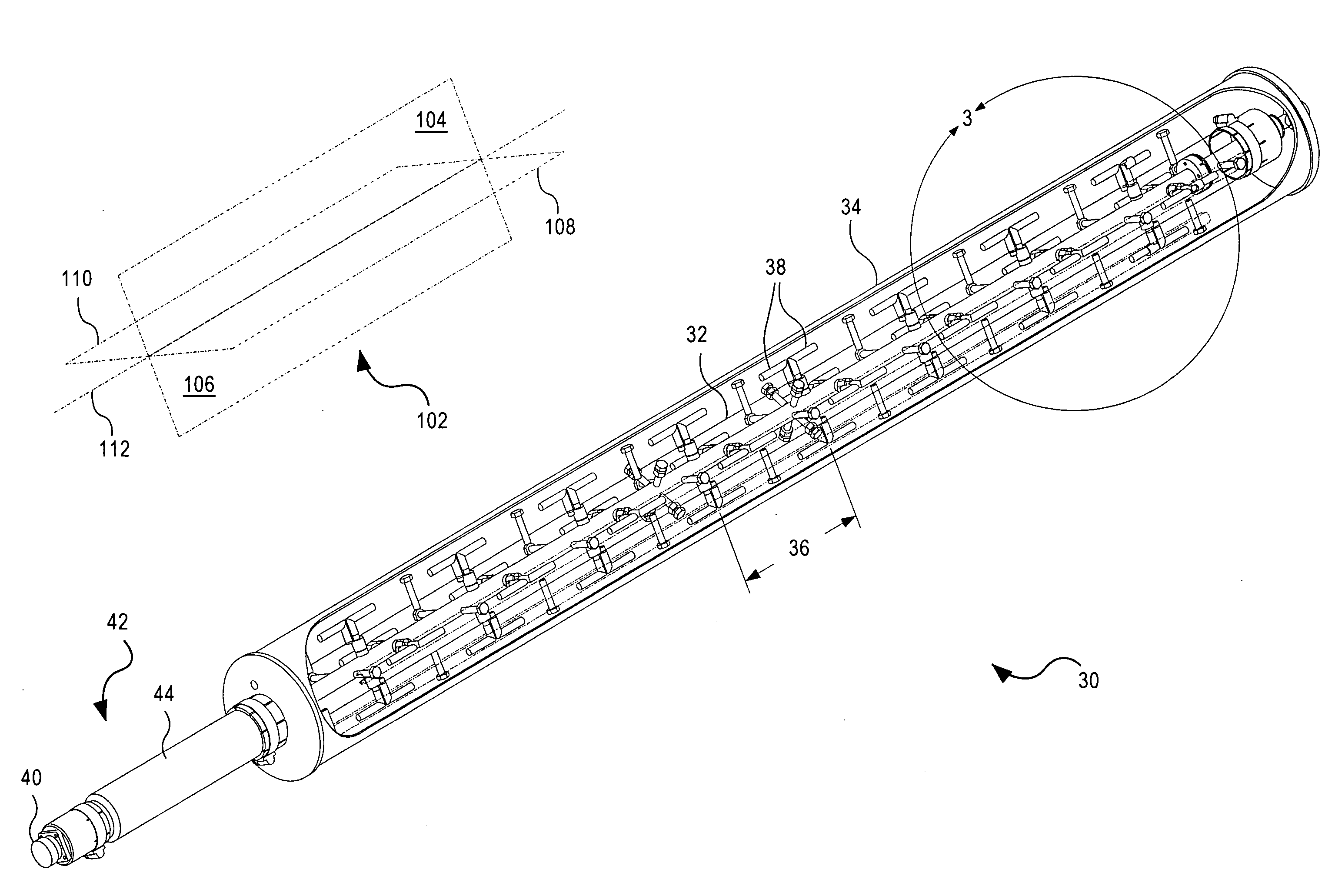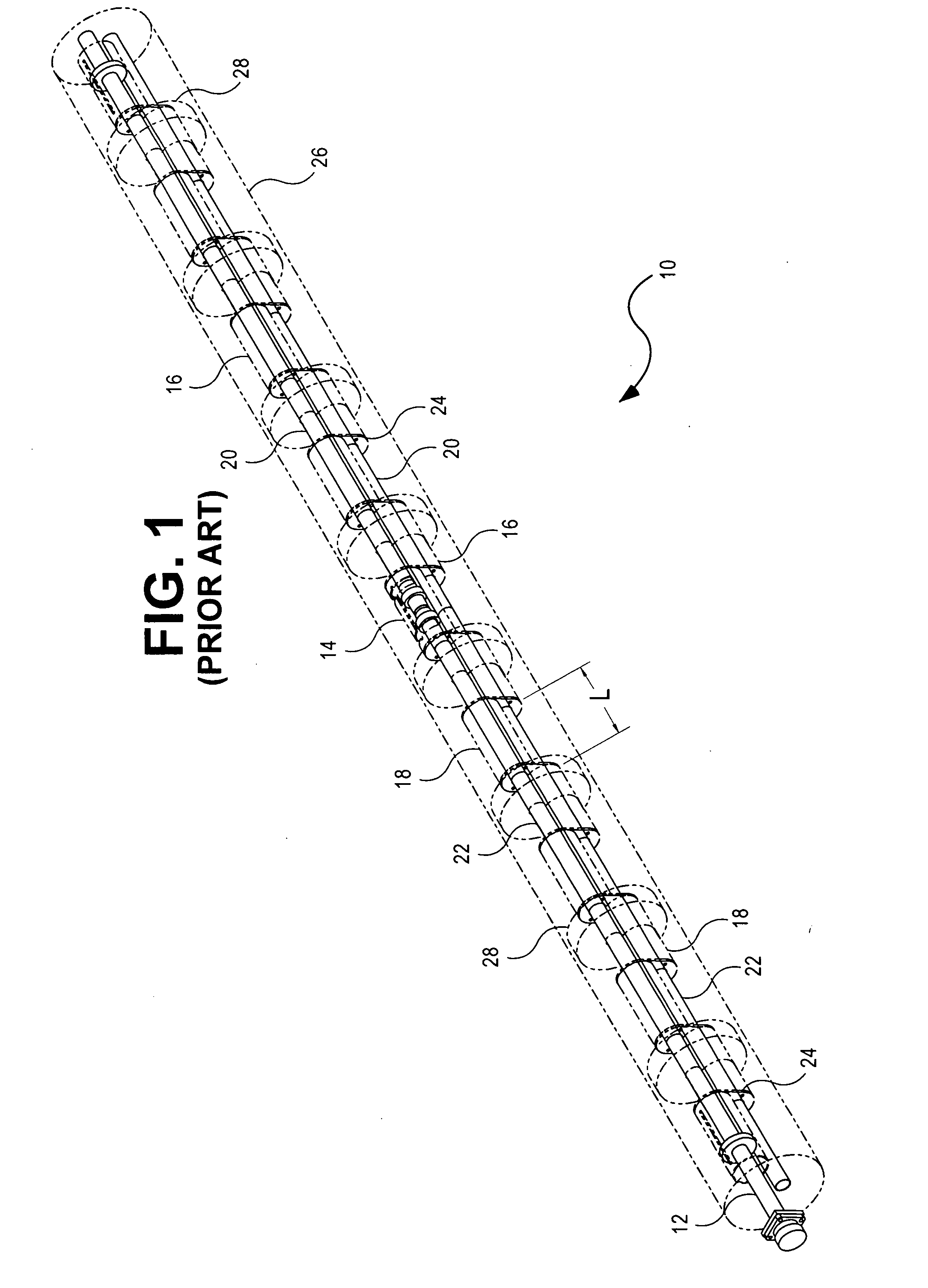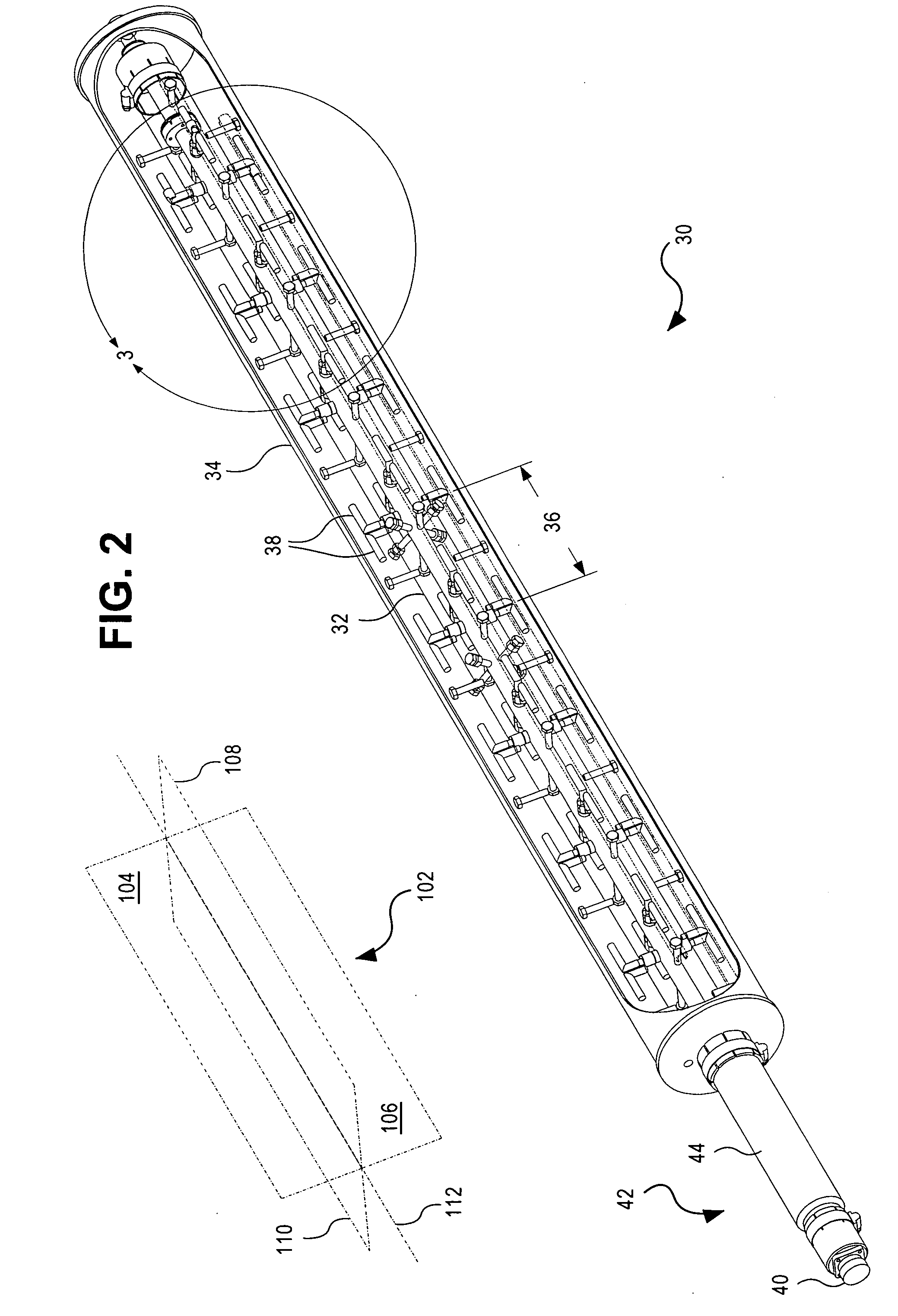Vertically polarized traveling wave antenna apparatus and method
a traveling wave antenna and vertical polarization technology, applied in the field ofradiating systems, can solve the problems of severe deformation of gain, limited power handling of traditional whip antennas for uhf, and limited flexibility of elevation radiation pattern, and achieve excellent azimuth pattern circularity and high power capability.
- Summary
- Abstract
- Description
- Claims
- Application Information
AI Technical Summary
Benefits of technology
Problems solved by technology
Method used
Image
Examples
Embodiment Construction
[0033]The invention will now be described with reference to the drawing figures, in which like reference numerals refer to like parts throughout. The present invention provides an apparatus and method that in some embodiments provides a vertically polarized traveling wave antenna.
[0034]FIG. 1 is a perspective view of a “whip” antenna 10 used according to known practice for broadcast and transceiver functions in the upper L band and nearby frequency bands. The particular whip antenna embodiment shown is center fed using a coax 12 to a center divider 14. From the divider 14, interleaved and stacked coax segments 16, 18 function as omnidirectional radiators while propagating the signal up and down the whip 10. Each of these coax segments 16, 18 has a center conductor 20, 22 as large as the outer conductor of the feed coax 12; indeed, the lower coax 18 uses the outer surface of the outer conductor of the feed coax 12 as its center conductor 22. In order for the antenna 10 to function as...
PUM
 Login to View More
Login to View More Abstract
Description
Claims
Application Information
 Login to View More
Login to View More - R&D
- Intellectual Property
- Life Sciences
- Materials
- Tech Scout
- Unparalleled Data Quality
- Higher Quality Content
- 60% Fewer Hallucinations
Browse by: Latest US Patents, China's latest patents, Technical Efficacy Thesaurus, Application Domain, Technology Topic, Popular Technical Reports.
© 2025 PatSnap. All rights reserved.Legal|Privacy policy|Modern Slavery Act Transparency Statement|Sitemap|About US| Contact US: help@patsnap.com



